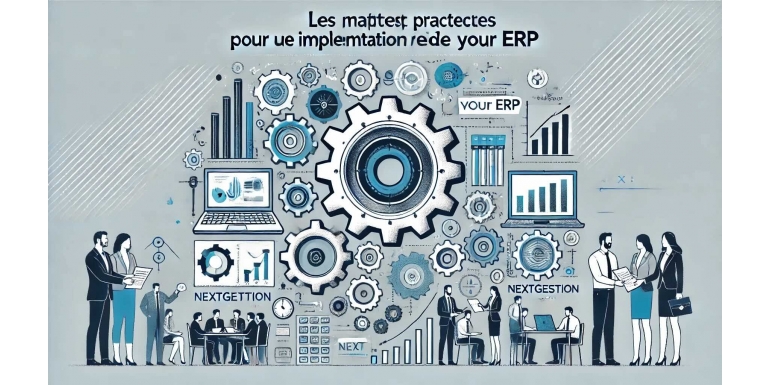
Best Practices for a Successful ERP Implementation
Implementing an ERP (Enterprise Resource Planning) system is a crucial step for any company looking to improve its internal processes, optimize resource management, and strengthen its competitiveness in the market. However, ERP implementation is a complex project that requires meticulous planning, precise execution, and effective change management. In this article, we will explore the best practices to ensure a successful ERP implementation, minimizing risks and maximizing return on investment.
1. Define Clear and Realistic Objectives
Before starting the implementation of an ERP, it is essential to define clear and realistic objectives. These objectives should be aligned with the overall strategy of the company and reflect the specific needs of the various stakeholders.
-
Strategic Alignment: Ensure that the ERP objectives are in line with the company's long-term vision. This includes improving operational efficiency, reducing costs, increasing customer satisfaction, and facilitating future growth.
-
Measurable Objectives: The objectives should be specific, measurable, achievable, relevant, and time-bound (SMART). For example, an objective could be to reduce order processing time by 20% within six months of implementation.
2. Involve Stakeholders from the Start
Engaging stakeholders is crucial for the success of an ERP implementation. Every department in the company will be affected by the change, so it is important to gather their needs and concerns early in the project.
-
Transparent Communication: Inform stakeholders about the project objectives, expected benefits, and potential challenges. This helps to gain their support and minimize resistance to change.
-
Defined Responsibilities: Assign clear roles and responsibilities to each stakeholder. This includes management, project managers, IT leaders, and end users.
3. Choose the Right ERP Partner
Choosing the right ERP vendor is a critical step in the implementation process. The partner should not only offer a solution that fits your needs but also provide technical support, training, and consulting services throughout the project.
-
Vendor Evaluation: Compare vendors based on their features, reputation, experience in your industry, and their ability to scale with your business.
-
Support and Training: Ensure that the vendor offers responsive technical support and training options for end users to facilitate system adoption.
4. Plan a Detailed Implementation Roadmap
Careful planning is key to a successful ERP implementation. It is important to create a clear roadmap that details the project phases, timelines, required resources, and success criteria.
-
Implementation Phases: Break the project into manageable phases, such as preparation, configuration, testing, training, and deployment. This allows for better risk management and adjustments along the way.
-
Risk Management: Identify potential risks early on and develop mitigation plans. Risks can include budget overruns, schedule delays, or user resistance.
5. Customize the System to Fit Your Needs
Every company has its own unique processes and requirements. It is therefore crucial to customize the ERP to meet the specific needs of your organization without compromising the simplicity and maintainability of the system.
-
Customization vs. Standardization: Balance customization needs with the benefits of standardization. Too much customization can make the system complex to maintain and update.
-
Rigorous Testing: Conduct thorough testing of the customized system to ensure it functions as expected before full deployment.
6. Train End Users Effectively
Training end users is an essential step to ensure smooth ERP adoption. Proper training allows users to familiarize themselves with the new system, understand its features, and apply best practices in their daily tasks.
-
Tailored Training: Customize training to the specific needs of each user group. For example, technical users will need more in-depth training on the technical aspects of the system, while end users will need practical training on daily features.
-
Ongoing Support: Provide ongoing support after deployment to answer questions, resolve issues, and offer refresher training if needed.
7. Continuously Monitor and Optimize
ERP implementation doesn’t end with deployment. It is important to continuously monitor system performance, gather user feedback, and optimize processes based on the results obtained.
-
Post-Implementation Review: Conduct post-implementation review sessions to assess whether the initial objectives have been met and to identify areas for improvement.
-
Continuous Improvement: Use data and user feedback to make continuous improvements to the ERP system, adjusting processes, adding new features, and ensuring the system remains aligned with business goals.
Conclusion: The Key to a Successful ERP Implementation
A successful ERP implementation relies on rigorous planning, active stakeholder involvement, a wise choice of ERP partner, and effective change management. By following these best practices, companies can maximize the benefits of their ERP system, improving operational efficiency, flexibility, and their ability to respond to changing market needs.
